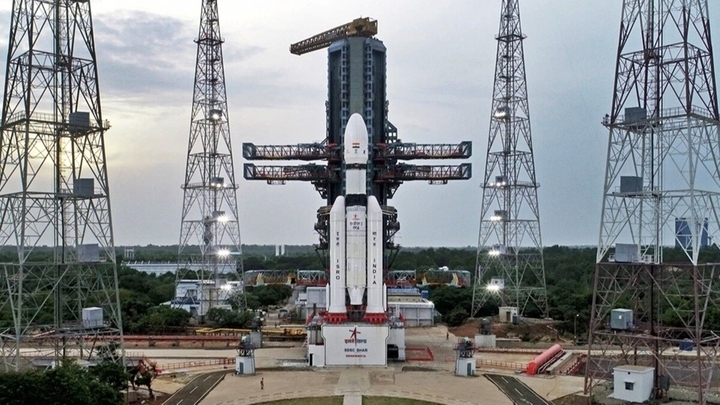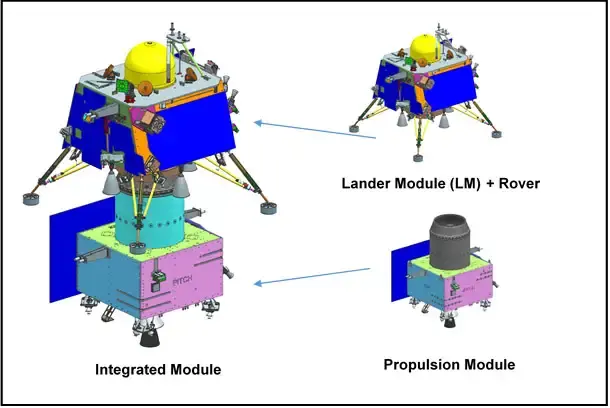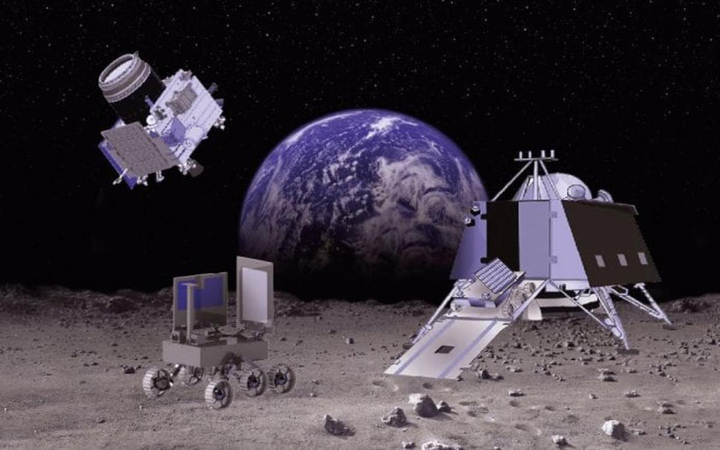Chandrayaan-3: A guide to third mission of India to the moon
By BYJU'S Exam Prep
Updated on: September 25th, 2023

Chandrayaan-3 has been launched by LVM3 from SDSC SHAR, Sriharikota today (14th July 2023). It is the third lunar exploration mission by ISRO (Indian Space Research Organization). To know more, read the full article.
Table of content
Want to know about India’s another mission to moon?
India’s third mission to the moon titled ‘Chandrayaan-3’ took off successfully from the Satish Dhawan Space Centre in Sriharikota, Andhra Pradesh. It will take a month for Chandrayaan-3 to land on the lunar surface. If successful, the mission will make India the only fourth nation, after the United States (US), the former Soviet Union and China, to have accomplished the task.
What is Chandrayaan-3?

- Chandrayaan-3 is the third lunar exploration mission by ISRO and is a follow-on mission to Chandrayaan-2 to demonstrate end-to-end capability in safe landing and roving on the surface of moon
- It consists of a lander and a rover like that of Chandrayaan-2 but does not have an orbiter.
- Its propulsion module behaves like a communication relay satellite andf will carry the lander and rover configuration till 100 km lunar orbit.
- The propulsion module has Spectro-polarimetry of Habitable Planet Earth (SHAPE) payload to study the spectral as well as Polari metric measurements of Earth from the lunar orbit.
Objectives of Chandrayaan-3
- To demonstrate Soft and Safe Landing on Lunar Surface
- To demonstrate Rover roving on the moon
- To conduct in-situ scientific experiments
Components of Chandrayaan-3

Propulsion Module
- It will carry the lander and rover configuration till 100 km lunar orbit.
- It is a box-like structure with one large solar panel mounted on one side and large cylinder on top (Intermodular Adapter Cone) that acts as a mounting structure for the lander.
- Apart from the lander, the module carries a payload called SHAPE to study the spectral and polarimetric measurements of Earth from the lunar orbit.
Lander
- It is responsible for the soft landing on the Moon.
- It is also box-shaped, with 4 landing legs and four landing thrusters of 800 newtons each.
- It will carry the rover and various scientific instruments to perform in-site analysis.
- It will have only 4 throttle-able engines.
- It will be equipped with a Laser Doppler Velocimeter (LDV).
- Its impact legs are made stronger compared to Chandrayaan-2 and increased instrumentation redundancy.
Rover
- Six-wheeled design
- Weight of 26 kilograms (57 pounds)
- Range of 500 meters (1,640 feet)
- Scientific instruments including cameras, spectrometers, and a drill
- Expected lifespan of one lunar day (14 Earth days)
- Communication with the lander and ground control team in India
The Chandrayaan-3 Rover is expected to make important scientific discoveries, including:
- The composition of the lunar surface
- The presence of water ice in the lunar soil
- The history of lunar impacts
- The evolution of the Moon’s atmosphere
Advanced technologies present in Lander
- Altimeters: Laser & RF based Altimeters
- Velocimeters: Laser Doppler Velocimeter & Lander Horizontal Velocity Camera
- Inertial Measurement: Laser Gyro based Inertial referencing and Accelerometer package
- Propulsion System: 800N Throttleable Liquid Engines, 58N attitude thrusters & Throttleable Engine Control Electronics
- Navigation, Guidance & Control (NGC): Powered Descent Trajectory design and associate software elements
- Hazard Detection and Avoidance: Lander Hazard Detection & Avoidance Camera and Processing Algorithm
- Landing Leg Mechanism.
Lander special tests
- Integrated Cold Test: The test is for the demonstration of Integrated Sensors & Navigation performance test using helicopter as test platform
- Integrated Hot test: This test is for the demonstration of closed loop performance test with sensors, actuators and NGC using Tower crane as test platform
- Lander Leg mechanism performance test will be based on a lunar simulant test bed simulating different touch down conditions.
About Chandrayaan-1

- It was first mission of India to the moon, which was launched on 22nd October, 2008 from the Satish Dhawan Space Center in Sriharikota, India, aboard a Polar Satellite Launch Vehicle (PSLV) rocket.
- It achieved lunar orbit on 8th November and released a Moon Impact Probe on 14th November that deliberately crashed into the moon later that day.
- The spacecraft was orbiting at a height of 100 km around the Moon from the lunar surface for chemical, mineralogical, and photo-geologic mapping of the Moon.
- The spacecraft carried 11 scientific instruments built in India, USA, UK, Germany, Sweden, and Bulgaria.
- The satellite made more than 3400 orbits around the Moon and concluded its mission when the communication with the spacecraft was lost on 29 August 2009.
- The major discovery of the Chandrayaan-1 mission is the detection of water (H2O) and hydroxyl (OH) on the surface of moon.
Chandrayaan-2

- It was India’s second mission to the moon and was launched from the Satish Dhawan Space Center in Sriharikota, India, aboard a Geosynchronous Satellite Launch Vehicle (GSLV) rocket on July 22, 2019.
- It made it to lunar orbit on Aug. 19, 2019, and in September 2019, Chandrayaan-2 released the Vikram moon lander, but mission officials lost contact with it as it was just 1.3 miles (2.1 km) above the surface.
- Although the lander was lost, the orbiter continues to work well and carries eight different instruments and continues to send back high-definition imagery of the lunar surface.
<<<<<<<<<<<<<<<<<<<<<<<<<<<<<<<<<<<<<<<<


